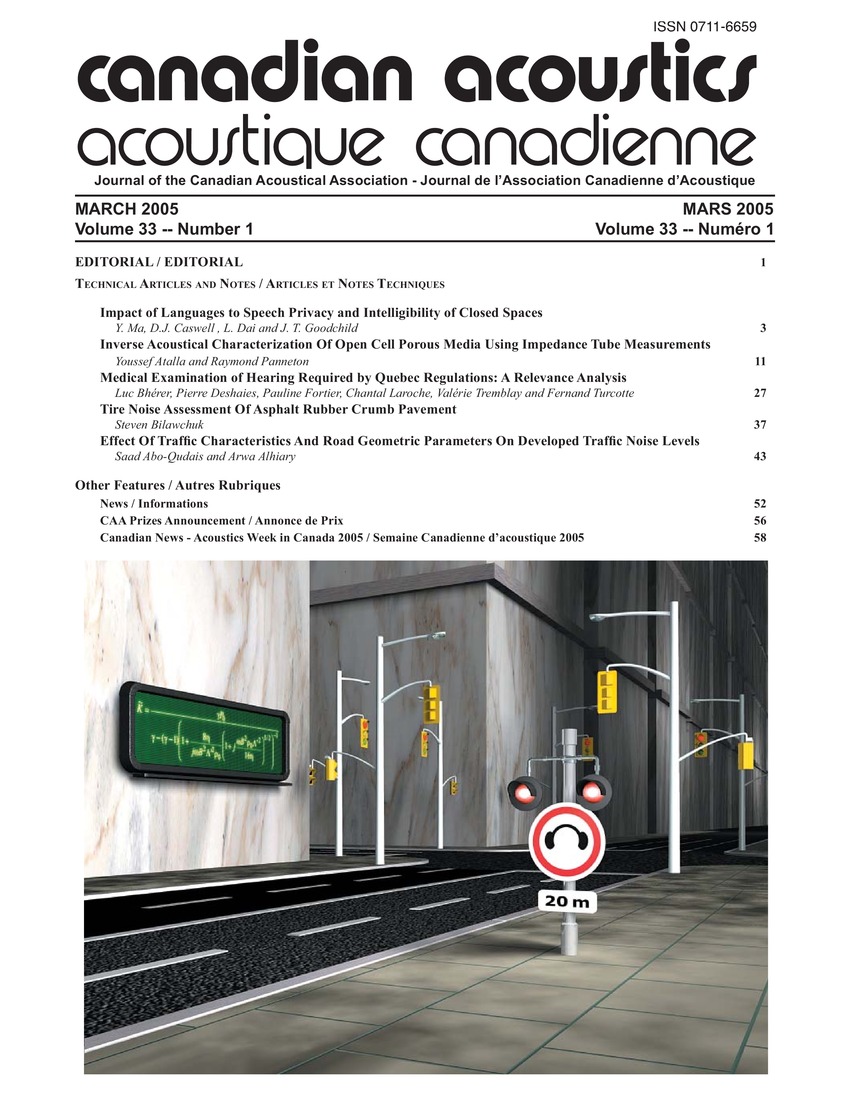Inverse acoustical characterization of open cell porous media using impedance tube measurements
Keywords:
Acoustic impedance, Algorithms, Mathematical models, Optimization, Porosity, Porous materials, Viscous flow, Champoux-Allard model, Inverse characterization methods, Particular absorbing materials, Thermal characteristicsAbstract
Unlike porous models developed for particular absorbing materials and frequency ranges, the Johnson-Champoux-Allard model is a generalized model for sound propagation in porous materials over a wide range of frequencies. This model is nowadays used widely across the acoustic research community and by industrial sector. However to use this model, the knowledge, particularly, of the intrinsic material properties defining the model is necessary. Using the proposed porous model and with the knowledge of the intrinsic properties, the calculation of the desired acoustical indicators as well as the design and optimization of several acoustic treatments for noise reduction can be done efficiently and rapidly. The model of Johnson-Champoux-Allard is based on five intrinsic properties of the porous medium: the flow resistivity, the porosity, the tortuosity, the viscous characteristic length, and the thermal characteristic length. While the open porosity and airflow resistivity can be directly measured without great difficulties, the direct measurements of the three remaining properties are usually complex, less robust, or destructive. To circumvent the problem, an inverse characterization method based on impedance tube measurements is proposed. It is shown that this inverse acoustical characterization can yield reliable evaluations of the tortuosity, and the viscous and thermal characteristic lengths. The inversion algorithm contains an optimization process and hence it is verified that the identified optimal three parameter, even though derived from a mathematical optimum for a given experimental configuration (sample's thickness, measured frequency range), are the intrinsic properties of the characterized porous material.Additional Files
Published
How to Cite
Issue
Section
License
Author Licensing Addendum
This Licensing Addendum ("Addendum") is entered into between the undersigned Author(s) and Canadian Acoustics journal published by the Canadian Acoustical Association (hereinafter referred to as the "Publisher"). The Author(s) and the Publisher agree as follows:
-
Retained Rights: The Author(s) retain(s) the following rights:
- The right to reproduce, distribute, and publicly display the Work on the Author's personal website or the website of the Author's institution.
- The right to use the Work in the Author's teaching activities and presentations.
- The right to include the Work in a compilation for the Author's personal use, not for sale.
-
Grant of License: The Author(s) grant(s) to the Publisher a worldwide exclusive license to publish, reproduce, distribute, and display the Work in Canadian Acoustics and any other formats and media deemed appropriate by the Publisher.
-
Attribution: The Publisher agrees to include proper attribution to the Author(s) in all publications and reproductions of the Work.
-
No Conflict: This Addendum is intended to be in harmony with, and not in conflict with, the terms and conditions of the original agreement entered into between the Author(s) and the Publisher.
-
Copyright Clause: Copyright on articles is held by the Author(s). The corresponding Author has the right to grant on behalf of all Authors and does grant on behalf of all Authors, a worldwide exclusive license to the Publisher and its licensees in perpetuity, in all forms, formats, and media (whether known now or created in the future), including but not limited to the rights to publish, reproduce, distribute, display, store, translate, create adaptations, reprints, include within collections, and create summaries, extracts, and/or abstracts of the Contribution.


